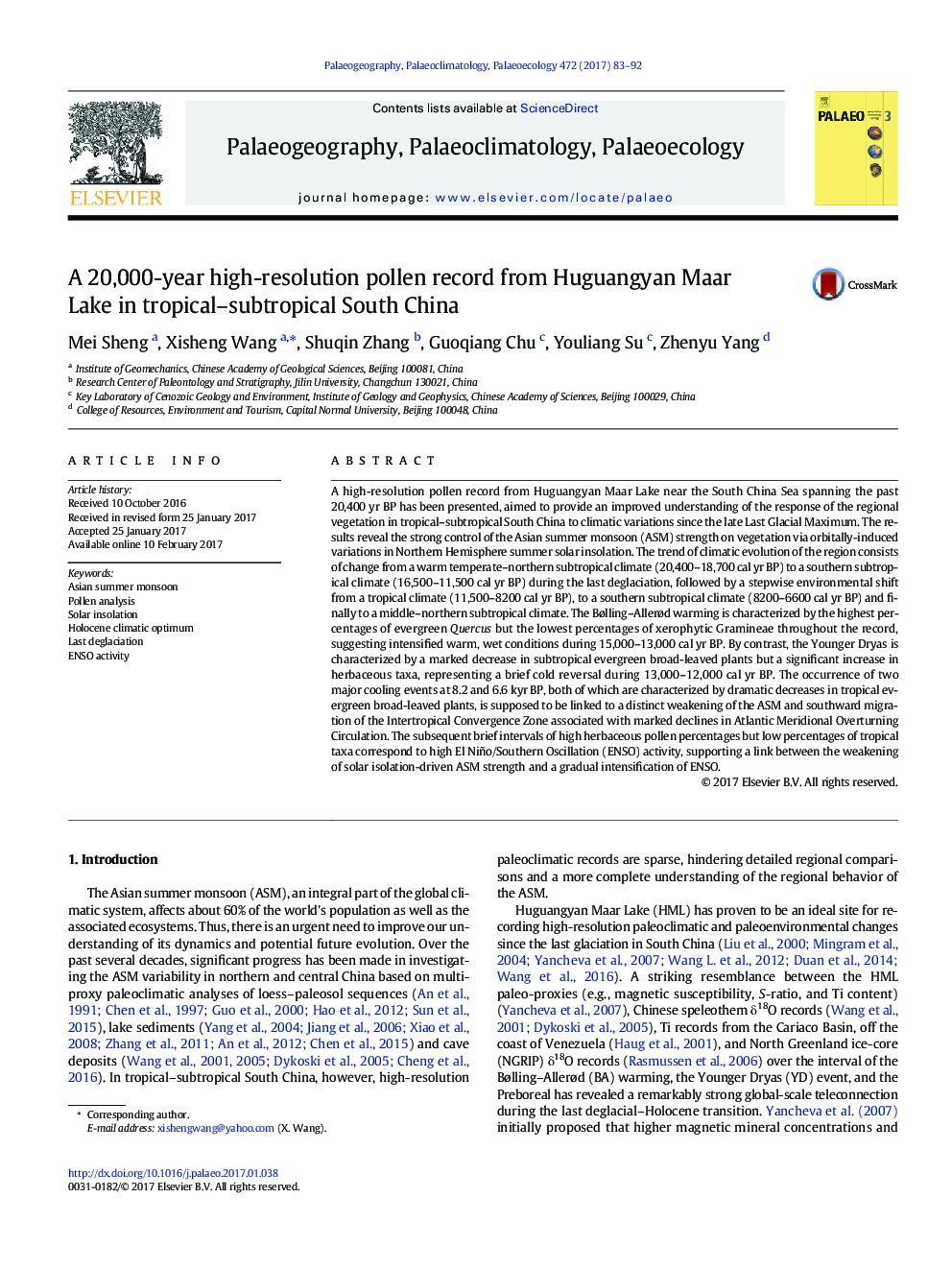| کد مقاله | کد نشریه | سال انتشار | مقاله انگلیسی | نسخه تمام متن |
|---|---|---|---|---|
| 5755863 | 1622120 | 2017 | 10 صفحه PDF | دانلود رایگان |
- High-resolution pollen data from Huguangyan Maar Lake since the LGM were presented.
- A complete ASM-controlled vegetation history in tropical-subtropical South China.
- Holocene precipitation maximum occurred between 10.5 and 8.2 kyr BP in South China.
- 8.2 and 6.6Â kyr events are linked to weakening of AMOC and southward shift of ITCZ.
- A link of high/low percentages of herbaceous/tropical taxa to high ENSO activity.
A high-resolution pollen record from Huguangyan Maar Lake near the South China Sea spanning the past 20,400 yr BP has been presented, aimed to provide an improved understanding of the response of the regional vegetation in tropical-subtropical South China to climatic variations since the late Last Glacial Maximum. The results reveal the strong control of the Asian summer monsoon (ASM) strength on vegetation via orbitally-induced variations in Northern Hemisphere summer solar insolation. The trend of climatic evolution of the region consists of change from a warm temperate-northern subtropical climate (20,400-18,700 cal yr BP) to a southern subtropical climate (16,500-11,500 cal yr BP) during the last deglaciation, followed by a stepwise environmental shift from a tropical climate (11,500-8200 cal yr BP), to a southern subtropical climate (8200-6600 cal yr BP) and finally to a middle-northern subtropical climate. The Bølling-Allerød warming is characterized by the highest percentages of evergreen Quercus but the lowest percentages of xerophytic Gramineae throughout the record, suggesting intensified warm, wet conditions during 15,000-13,000 cal yr BP. By contrast, the Younger Dryas is characterized by a marked decrease in subtropical evergreen broad-leaved plants but a significant increase in herbaceous taxa, representing a brief cold reversal during 13,000-12,000 cal yr BP. The occurrence of two major cooling events at 8.2 and 6.6 kyr BP, both of which are characterized by dramatic decreases in tropical evergreen broad-leaved plants, is supposed to be linked to a distinct weakening of the ASM and southward migration of the Intertropical Convergence Zone associated with marked declines in Atlantic Meridional Overturning Circulation. The subsequent brief intervals of high herbaceous pollen percentages but low percentages of tropical taxa correspond to high El Niño/Southern Oscillation (ENSO) activity, supporting a link between the weakening of solar isolation-driven ASM strength and a gradual intensification of ENSO.
Journal: Palaeogeography, Palaeoclimatology, Palaeoecology - Volume 472, 15 April 2017, Pages 83-92
